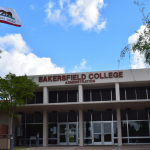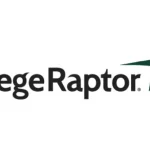Five years ago, the Office of Enrollment Management and Marketing at Empire State University, a public institution within the State University of New York (SUNY) system, embarked on a journey to bolster student support through self-service. What started as an internal assessment in 2018 ended in a full-scale digital transformation of the institution’s student service and communication strategy. The result? A 3.7% increase in retention rate!
Here’s a look at how Empire State University evolved its strategy over the five-year period to boost student success and increase retention:
Looking Back to Move Forward
Getting Started with Self-Service Student Resources
Empire State University’s journey to transform its student communications approach began with a robust internal system and service assessment in 2018. By first understanding students’ needs and how well existing infrastructure was supporting those needs, SUNY Empire could better strategize for the future.
It was evident upon completing the assessment that students and prospects needed more information about financial aid and billing. Many were calling with questions—and ultimately felt like they needed additional resources to understand the many university processes.
SUNY Empire determined that self-service material delivered through email would help reduce call volume. The team then embarked on its first effort to make videos and knowledge base articles available to students. This content was aimed at addressing common student and prospect questions, from how to apply for and check aid status, to accepting awards and avoiding cancellation for non-payment.
Accelerating Proactivity to Drive Results
Sending Educational Resources via Email
Building on the early success SUNY Empire saw in making self-service material available, the institution doubled down on the videos and knowledge base articles, proactively embedding the content in relevant student email campaigns and offering live chat options for students to get answers via the web.
Six weeks after embedding links into email communications, the percent increase in views for self-service content was exponential. More students were clicking on self-service resources and getting the information they needed. As a result, call volume was reduced by 8% in the spring term.
Call center representatives also noticed a distinct change in caller behavior in that callers were better educated and more aware of the status of their bills and the risk of cancellation for nonpayment. Enrollment was up that year while cancellations for non-payment remained flat. The 1Stop Student Services team knew they were onto something.
Scaling Self-Service Campus Wide to Enable Student Success
Introducing the 1Stop Student Services Website
2020 marked an inflection point in SUNY Empire’s transformation. The concept of empowering students to succeed by making information available through self-service tools was cemented as a fundamental piece of the enrollment and retention strategy. That year, the institution invested in scaling the approach across university channels.
1Stop Student Services introduced a 24/7 self-service website where important information about upcoming term dates was posted and links to self-service tools were displayed. They also created new contact centers for the student success, financial aid, registrar, and student accounts offices. This enabled tier-two student-service inquiries to be triaged and addressed by subject-matter experts, while expanding the amount of call center service data collected. This information would be utilized to shape continued development of self-service materials.
While these enhancements gave the university valuable insight into how best to serve students, SUNY Empire believed there were additional opportunities to optimize student support. As an institution that offers multiple part-of-term enrollment dates, the call center still experienced frequent periods of high call volume. Many of the questions asked during this time were the same FAQ on repeat. Staff remained bogged down, and students wanted more instantaneous answers, leading the team to start looking into AI-powered solutions.
Taking a Multichannel Approach to Achieve More
Launching an AI-Powered Virtual Assistant
SUNY Empire kicked off 2021 with the launch of a virtual assistant, powered by Ocelot’s AI Student Communications Platform. The virtual assistant allowed students to gain on-demand answers to common enrollment questions and was poised to serve as a critical tool in achieving the 1Stop Student Services team’s key performance metrics that year—increasing enrollment and decreasing call volume.
A large part of the strategy in 2021 was not just launching the virtual assistant but also connecting it to email and call campaigns, as well as marketing it as the virtual service arm of 1Stop. The university launched a social media campaign to promote the use of “Blue,” and the call center drove callers to the virtual assistant while they were on hold to speak with a representative. The approach increased awareness and trust in the bot’s ability to effectively provide necessary information via self-service.
By year’s end, the results were impressive. The virtual assistant handled more than 17,000 conversations and successfully expanded after-hours student services by 33%. Overall call volume during the Fall 2021 peak service period dropped 28%, and enrolled credits were up, a historic achievement for the organization.
Integrating with Campus Systems to Increase Personalization
Combining the Power of Ocelot & Banner
As year four arrived, it was evident the virtual assistant was emerging as a leading source for students and prospects to get answers to their enrollment and aid questions. But there was more to be done. Next for the team was connecting the virtual assistant with Banner, SUNY Empire’s student information system.
The integration allowed the virtual assistant to pull student-specific information into each interaction, personalizing the engagement to better meet students’ exact needs. That integration resulted in a 26% YOY increase of after-hours use of the virtual assistant and increased engagement with the assistant by 25%.
Adding Multi-Department Live Chat to Bolster Service
Expanding Channels to Include Live Assistant Support
With the success of self-service came an opportunity for SUNY Empire to invest in expanded live support for students when they had more complex questions. The school rolled out Ocelot’s Live Assistant in 2023, and the feature was adopted as an additional service option with 1Stop, financial aid, and ITS. With 3,673 live assistant engagements conducted, it is clear the strategy of applying human-centered AI —both self-service and the opportunity to connect with human beings—is a winning one.
The five-year initiative has been enormously successful.
- Call volume decreased by 54.4% from Fall 2018 to Fall 2022.
- Students get the answers to their questions when and where they need them.
- Departments are collaborating and learning about student needs through robust data generated by each virtual assistant interaction.
- Live, real-time conversations are happening.
- Students are more proactively informed.
- Staff can foster more personalized dialog and a deeper sense of community.
Each of these improvements had an enormous impact, not only on call center flow and maximizing efficiencies, but on the greater student experience. With Ocelot’s AI-Powered Student Communication Platform and SUNY Empire’s winning strategy, fall-to-fall retention increased nearly 4%, showing that investing time and resources into student communications truly makes a difference.















